Coffee in Italy is in a different league.
Bars use high-quality beans and their machines have brewed thousands of cups of coffee, the taste of which is infused into each new cup. Although Italian coffee is strong, it is rarely bitter.
However, getting to grips with Italian coffee culture can be challenging. There are coffee rules, rituals, menus, customs and etiquette, often unfathomable to the visitor.
This is where I can help. I’ve probably kept a small coffee plantation in business during my many trips to Italy and have benefitted from excellent tuition from my Italian friends.
Learn how to order coffee in Italy like a local with my guide, which includes all you need to know about the different types of Italian coffee and essential vocabulary.

ORDERING COFFEE IN ITALY AT A GLANCE
I’VE WRITTEN THIS ITALY SOLO TRAVEL GUIDE!
A 100+ page ebook to inspire and equip solo travellers with the confidence and knowledge to explore Italy independently
- Plan Your Trip – with curated itineraries, budgeting and how to get around
- Explore Awesome Destinations – guides to the must-see cities of Rome, Florence, Venice and Naples
- Stay Safe as a Solo Traveller – practical safety advice, empowering you to confidently navigate Italy and avoid common pitfalls
- Enjoy Eating Out in Italy – essential tried-and-tested solo dining tips
Step 1: Find a Bar
The first thing you need to do when you need a caffeine fix is to find a bar (un bar). A bar in Italy is not like the bars you may be used to at home. Although an Italian bar will sell sandwiches, pastries and alcohol, coffee is their main trade.
Reflecting their importance in Italian culture, bars are liberally sprinkled throughout Italian cities, towns and villages. Trust me; you will have no problem finding one.
Once you have found a bar that you like the look of, step up to the counter to place your order.
Step 2: Choose Your Coffee
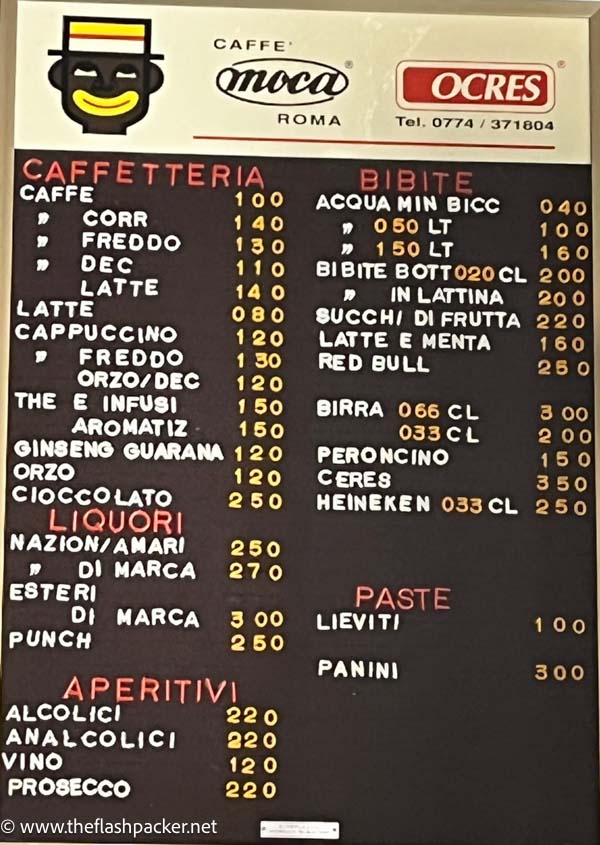
Before you approach the barista you will need to decide which type of coffee to order. I usually opt for an espresso or a caffè macchiato.
The default coffee – un caffè – is an espresso. In touristy spots, there’s sometimes an assumption that you will be after a weaker coffee. If you want to make it clear that you really do want an espresso you can also ask for a caffè normale.
I loathe American-style drip coffee. But if that’s your preferred caffeinated drink, you won’t find it on the menu in Italy. The closest to a drip coffee in Italy is a caffè Americano or caffè lungo which is a shot of espresso topped up with hot water.
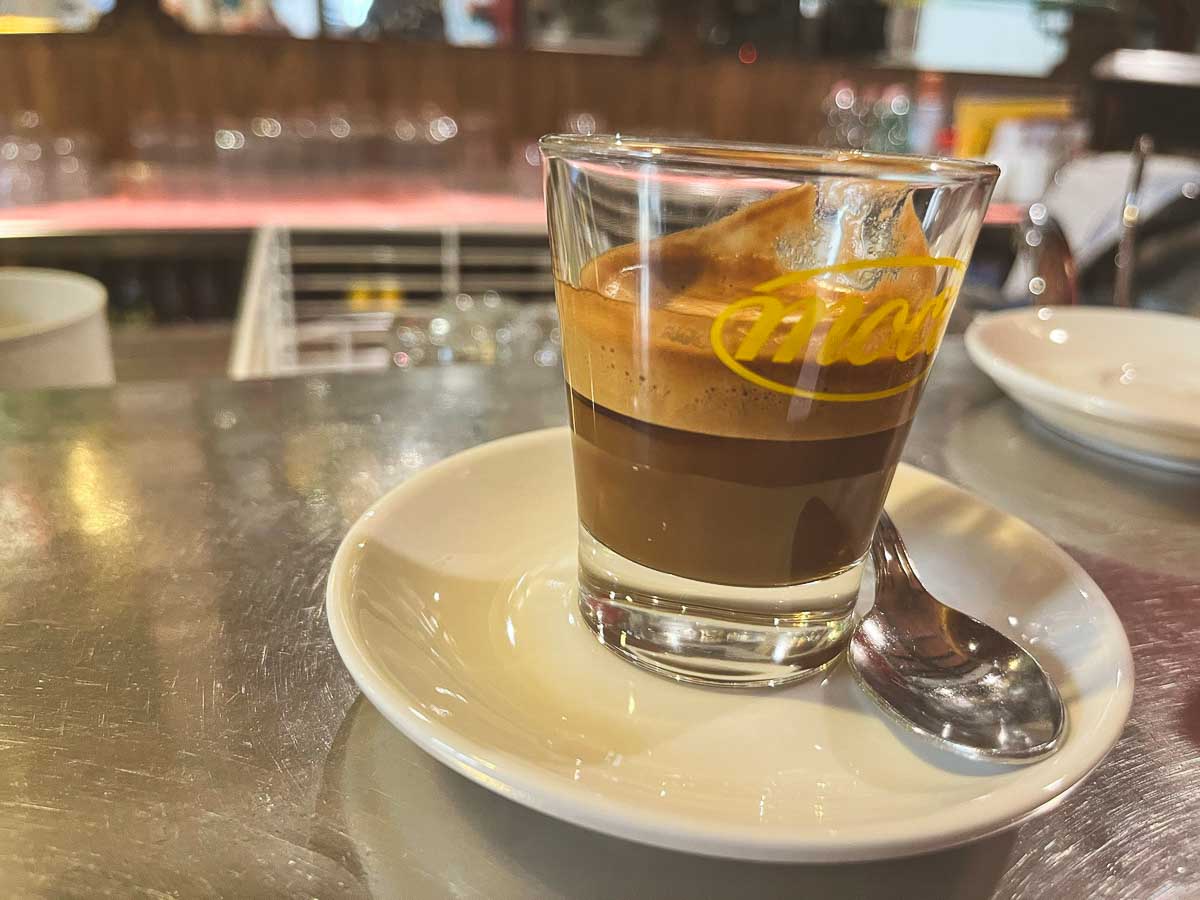
Popular types of coffee in Italy
Caffè
This is a short, very strong, single espresso, served in a small cup with sugar to hand if you need it. The existence of crema, foam made by the oils in the coffee beans, on its surface is a good indicator of its quality.
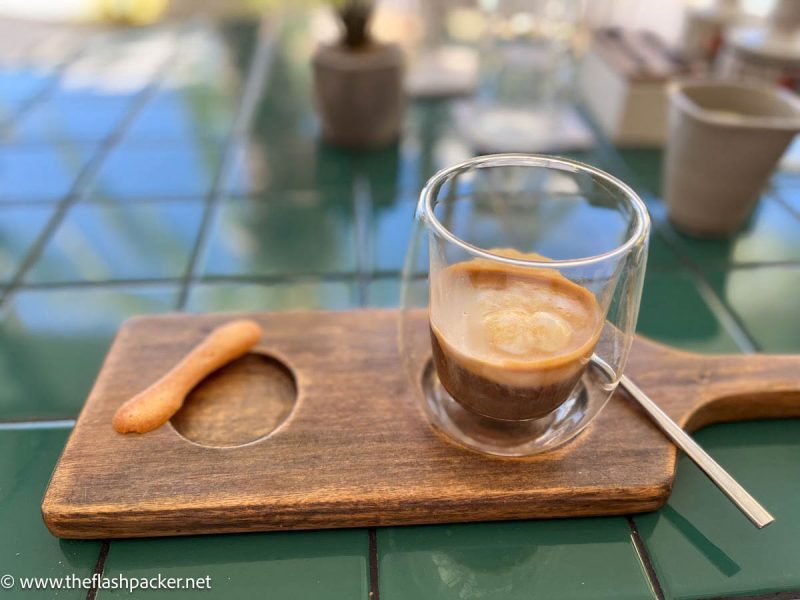
Caffè lungo
Confusingly, this is not a long coffee as you might expect, but has around double the water of a regular espresso.
Caffè Americano
Although shorter and stronger than American drip coffee, this is more dilute than a caffè lungo. In some bars, I have been given an espresso in a larger cup, and hot water in a small jug to dilute the coffee to the desired strength.
In my experience, a caffè Americano is rarely great.
Cappuccino
Known the world over, cappuccino is probably Italy’s most famous coffee.
It is a combination of espresso and full-fat milk, finished off with steamed milk. The ratio of the three ingredients is more or less equal.
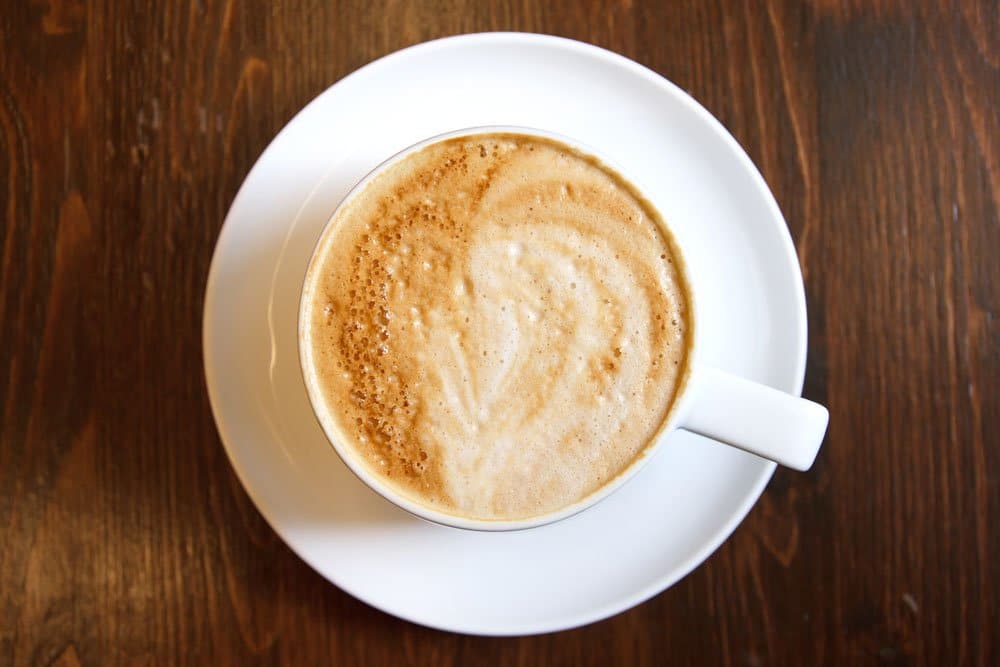
Although a cappuccino will be a longer drink than a caffè, caffè lungo or caffè Americano, don’t expect anything approaching the vat-sized measures you get at home. Because of this, a cappuccino in Italy has much more flavour than you might expect.
For this reason, I never drink a cappuccino at home but I will happily order one at the bar in Italy.
When NOT to drink a cappuccino
In Italy, a cappuccino is thought of as a breakfast drink. Ordering a cappuccino after 11 a.m., and particularly after eating, is a cultural no-no. Italians regard hot drinks with milk as “heavy” and should never be drunk before or after eating.
The same religious fervour applies to varieties of caffè latte. Of course, it’s entirely up to you when you order a cappuccino, and the barista will not refuse to serve you your frothy cup.
Occasionally, when away from the watchful eye of my Roman friends, I have done exactly that. Just be prepared to brave the raised eyebrows and judgemental look from the barista
Caffè latte
A caffè latte doesn’t have the same popularity in Italy as in other countries. A weaker coffee drink than a cappuccino, a caffè latte is essentially one part espresso to two parts hot milk, topped with just a little milk foam.
Whatever you do, don’t ask for a latte. This translates as milk and you are likely to be handed a glass of the white stuff.
Caffé macchiato
A caffé macchiato is a far more common coffee in Italy. Broadly speaking, there are two variants:
- Caffè macchiato – This is an espresso that is stained (macchiato) with milk
- Latte macchiato – The reverse of caffè macchiato, this is warm milk stained a shot of espresso.
As macchiato is an adjective in Italian you need to be specific. If you just ask for a macchiato, the barista will not know if you wish to order a caffè macchiato or a latte macchiato.
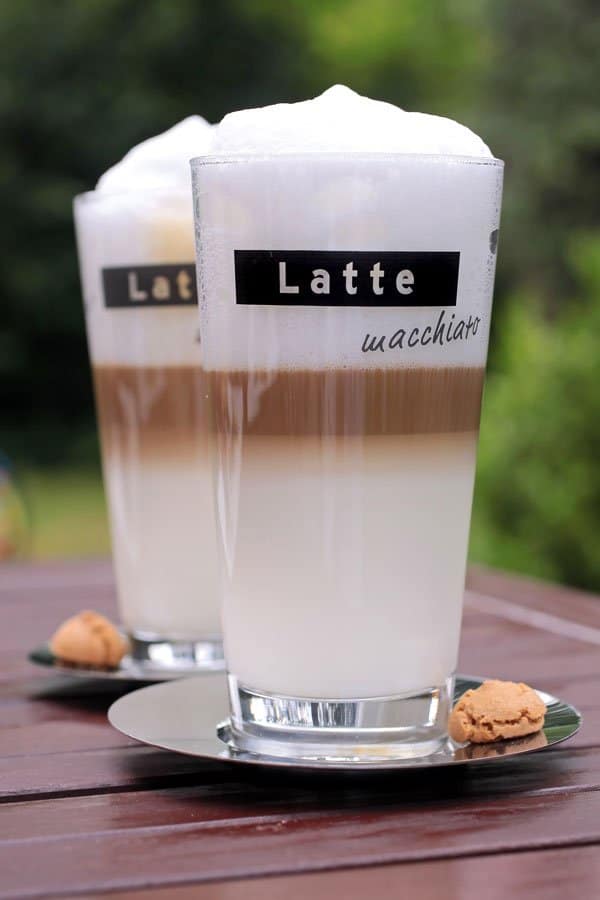
Caffé macchiatone
Think of the macchiatone as a cousin of the caffè macchiato, having the same amount of coffee but a little more milk.
Caffè ristretto
Is an espresso not strong enough for you? Then try a ristretto, also known as caffè corto. Short of sucking on a coffee bean, this is the closest that you will get to ordering pure coffee.
You’ll be bouncing off the walls of the Sistine Chapel in the afternoon.
Caffè marrochino
This is the closest thing to a Cafe Mocha in your local coffee shop.
Created in Alessandria in Piedmont, caffè marrochino consists of a shot of espresso, cocoa powder and milk froth. In some regions of northern Italy, thick cocoa or Nutella is added.
These layers of deliciousness are served in a glass.
Caffè cioccolato
This is my new caffeinated crush in Italy. Caffè cioccolato is a shot of espresso mixed with cocoa, the taste of which should linger long after you have taken your last sip.
Caffè corretto
Welcome to the Italian equivalent of the Irish Coffee, minus the cream.
This caffeinated taste of heaven consists of a shot of espresso with a small amount of alcohol. This is usually grappa, but can also be sambuca or brandy.
Usually, you will be served a ready-made caffè corretto simply with the alcohol already added to the espresso shot. In some cases, a shot glass of alcohol is served separate from the coffee to allow you to add the amount that you want.
If you are very lucky, you’ll be presented with a bottle of booze. However, that privilege tends to be reserved for regular customers.
Caffé shakerato
I love the name of this Italian coffee. If this doesn’t describe how it is made, I don’t know what does.
A typical summer drink in Italy, caffè shakerato is made by vigorously shaking a shot of espresso and ice. This light drink is served in a tall glass and is topped by a cloud of foamy froth.
The barista will ask if you would like your caffè shakerato dolce or zuccherato (in which case sugar will be added) or amaro (bitter). You can make it more special by adding whipped cream, chocolate or a shot of sweet alcohol.
Caffé freddo
Caffé freddo is pretty much your bog-standard iced coffee. This drink is simply espresso shaken with ice and sugar until it has a slightly frothy head.
Caffè affogato
I do love a caffè affogato.
Part coffee, part dessert, this is made by adding a shot of freshly made espresso to a scoop of vanilla ice cream in a glass. Caffè affogato translates to drowned coffee in English.
Caffè con panna
A caffè con panna is another decadent coffee.
This is a shot of espresso topped with a generous dollop of whipped cream. You can also order it in an Italian patisserie (pasticceria).
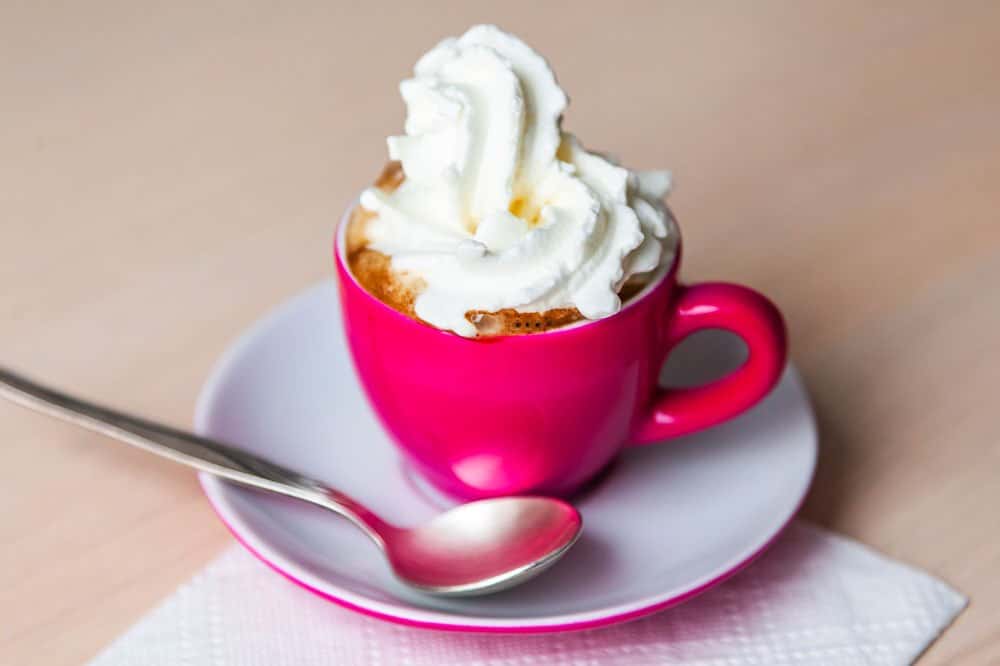
Ordering decaffeinated coffee in Italy
Do you want to cut down on caffeine? If you want a decaf coffee, ask for any of the varieties above adding decaffeinato (day-caff-een-AH-toe). Except for ristretto that is.
Caffè d’orzo
Are you looking for a caffeine-free drink that isn’t your usual decaffeinated coffee?
Caffè d’orzo made from barley (orzo) is naturally caffeine-free and a popular type of coffee in Italy. You can order it just like you would order regular coffee: for example; espresso, cappuccino and macchiato.
Caffè al ginseng
For something a little bit different, and more than a little bit trendy, try caffè al ginseng. But be warned; this tastes nothing like coffee.
Caffè al ginseng is prepared with ginseng root extract mixed with coffee. Typically twice the volume of an espresso, it has a (very) sweet and nutty flavour.
It’s reputed to be an aphrodisiac.
Caffè doppio
At the opposite end of the caffeine scale, there’s the caffè doppio, or double espresso. It’s the equivalent of a turbo boost for the day.
Regional coffees
If you really want to blend in, bone up on your regional coffee cultures. Although espresso is ubiquitous, there are many regional twists as you travel across Italy.
For example; Neopolitans enjoy their coffee with hazelnut flavouring. Travel to Padua for a 19th-century coffee tradition called patavina, combining espresso with cream, then finished with a dash of mint syrup and a dusting of cocoa.
Bicerin is the speciality of Turin, comprising layers of coffee, chocolate and cream in a glass.
Can you order a Flat White in Italy?
“But what about my flat white?” I hear you cry. Sorry, it’s not available in Italian bars.
The nearest equivalent to a flat white in Italy is a cappuccino.
However, you may be able to buy one in the big cities. On my recent visit to Florence, I had breakfast with a flat white in a coffee shop which was more like what I was used to outside Italy.
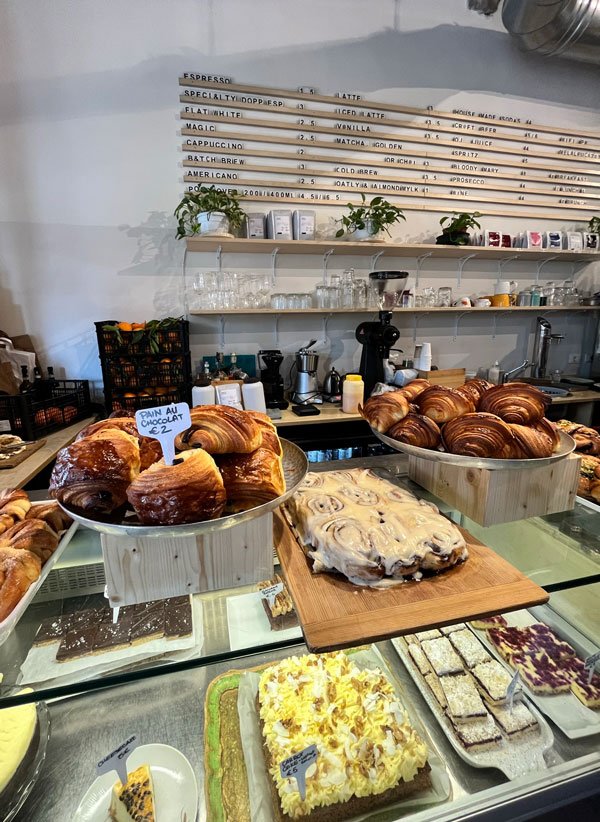
Step 3: Place your order
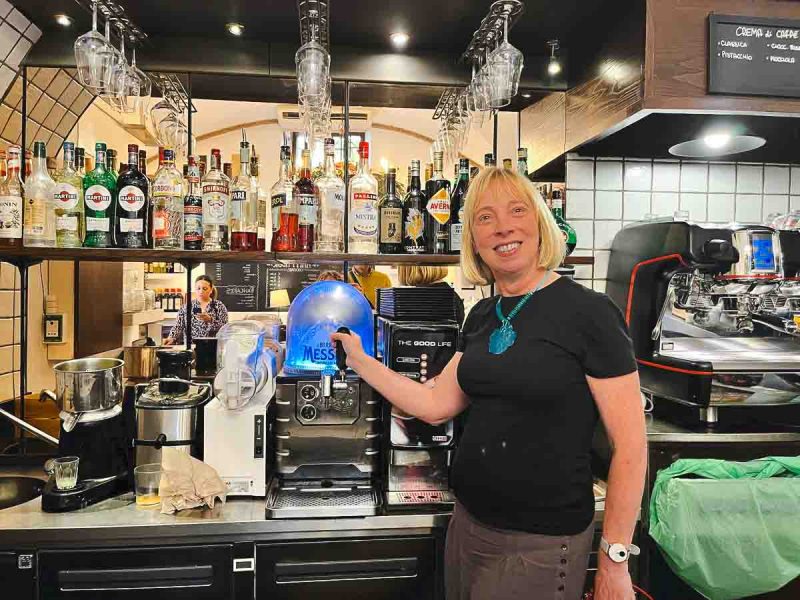
Ordering coffee in Italy can feel daunting, particularly if you’re jostling for space in a bar packed with locals and haven’t yet honed your Italian language skills. But follow these tips for ordering coffee and you’ll be fine.
A heads-up first.
Italians rarely linger over a coffee. Instead, they line the bar, chug down their coffee in two or three sips, and then they’re on their way. An espresso is a quick caffeine refuel.
Although it is not immediately obvious, in some busy Italian bars you pay first at the cash register (cassa). Ask for the coffee you want and hand over your money in exchange for a receipt. Don’t lose this!
However, in other Italian bars, you order first and pay later. When you have finished your coffee, hand over your receipt and pay the cashier or the barista.
Insider tip!
If you are not sure which ordering system is operating, hang back for a minute or so and watch a local order. Then copy him or her.
What you don’t want to do is to order your coffee only to be told that you need to pay first.
Next, shuffle your way to the counter (bancone). Don’t expect this to be like ordering coffee in your local Starbucks back home.
If you stand patiently waiting, you may never get served. If it’s busy, wait for a gap to open up at the front.
Although it may not give the appearance of it, there is some order. Therefore, don’t push in front of people.
When you get to the front of the counter, place your receipt in front of you. Make eye contact, smile at the barista and repeat your order. A cheery “buongiorno” (bwon-JOR-noh), or “buona sera” (BWON-ah SAY-rah) if it’s after lunch, goes a long way.
You will know your coffee is on its way when the saucer and a spoon are placed on the counter in front of you.
Step 4: Enjoy Your Coffee
When your coffee arrives, drink it quickly to make room for the next person.
Although you may be able to find a bar with seating in Italy (al tavolo), especially in the more touristy areas, it’s not how the locals drink their coffee. Also, you will pay extra to sit down in an Italian bar.
Takeaway coffee is not a thing in Italy.
Vocabulary for Ordering Coffee in Italy
Now you know a little more about coffee culture in Italy, here are a few key pieces of Italian vocabulary to increase your confidence:
USEFUL WORDS & PHRASES
- Buongiorno – Good day.
- Buonasera – Good afternoon/evening
- Arrivederci – Goodbye / Until we meet again
- Ciao – less formal greeting used as hello and goodbye
- Grazie – Thank you (if you’ve loved the service you can use grazie mille, literally translated as “a thousand thanks”)
- Un caffè per favore – a coffee please
Altro caffè, per favore – more coffee please - Vorrei … – I’d like
Posso avere … – may I have
- Caldo – hot
- Fredo – cold
COMMON ITEMS
- La tazza – cup
- Il bicchiere – glass
- Il cucchiaino – small spoon
- Lo zucchero – sugar
- Una bottiglia d’acqua – a bottle of water
TYPICAL BAR SNACKS
- Un panino – sandwich
- Un tramezzino – thin sandwich
- Le patatine – crisps / potato chips
- Un cornetto – Italian croissant
- Le nocciole – nuts
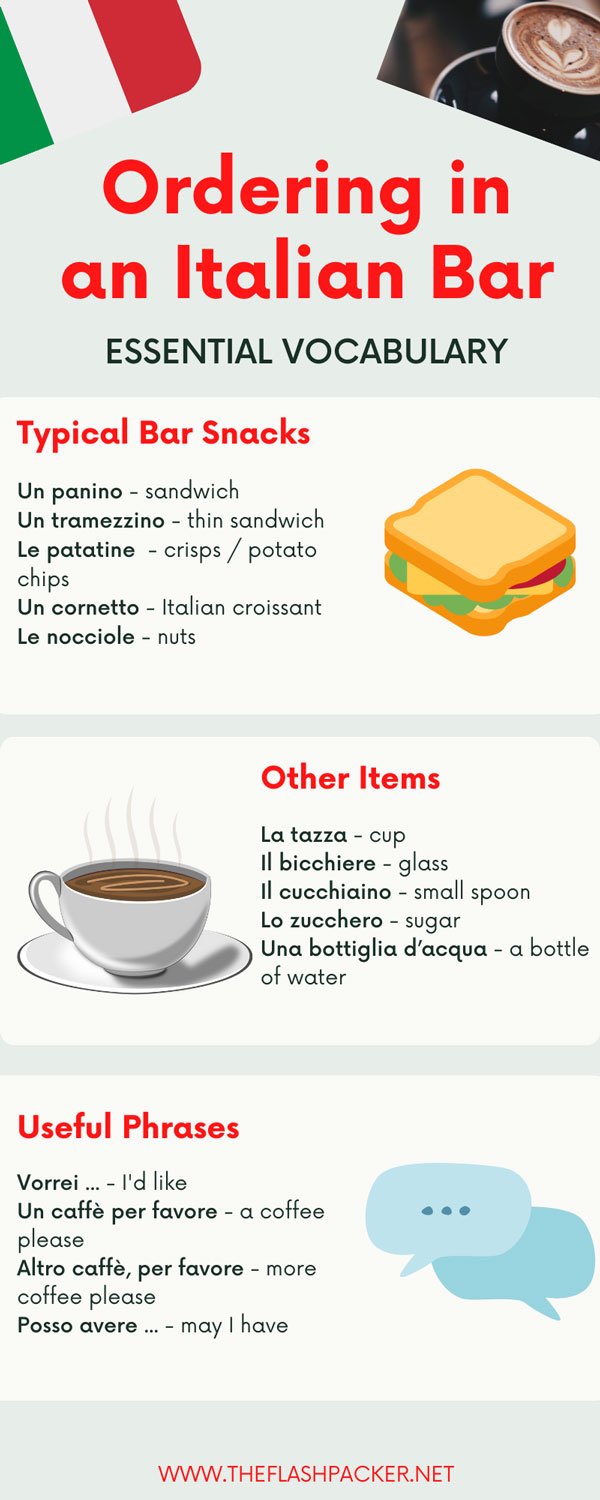
And that’s a wrap!
I hope these tips on how to order coffee in Italy will be helpful for your next trip to Rome or Rimini, Umbria or Urbino and beyond. Don’t be daunted and remember that practice makes perfect.
Buongusto!

About Bridget
Bridget Coleman has been a passionate traveller for more than 30 years. She has visited 70+ countries, most as a solo traveller.
Articles on this site reflect her first-hand experiences.
To get in touch, email her at hello@theflashpacker.net or follow her on social media.
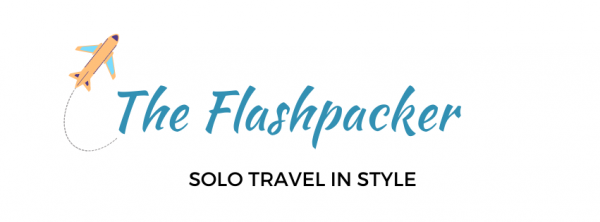
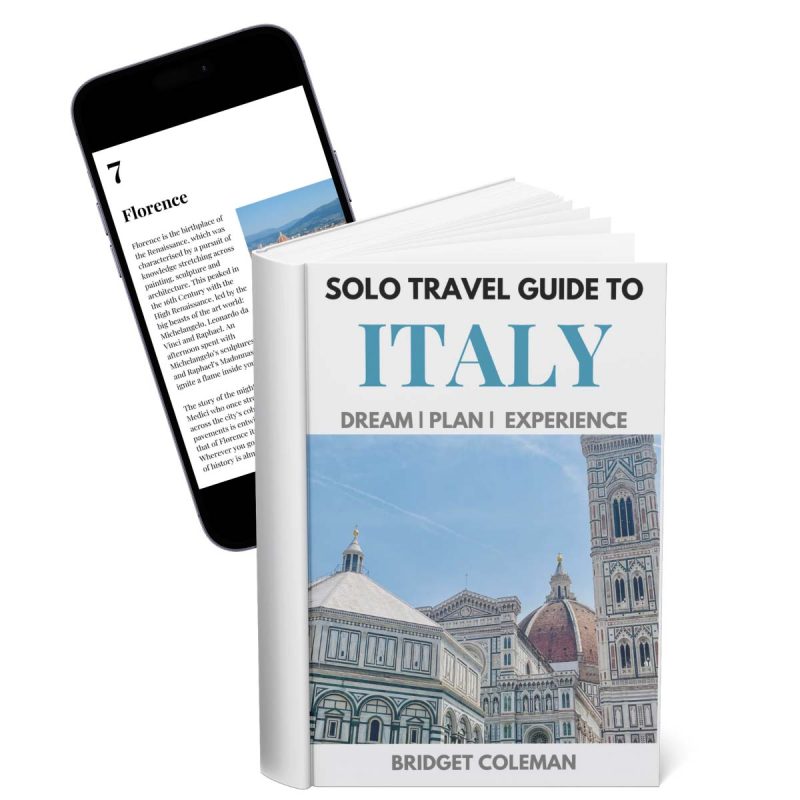
Just try to learn a bit of italian, AND GO FOR IT.. It isn’t too hard!
Great advice!
I’m afraid I wouldn’t do well in Italy. I like to linger…?♂️
Yep. I struggle with that also :)